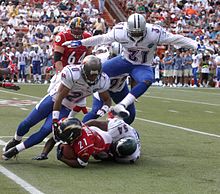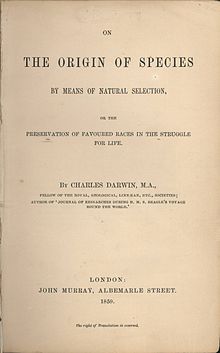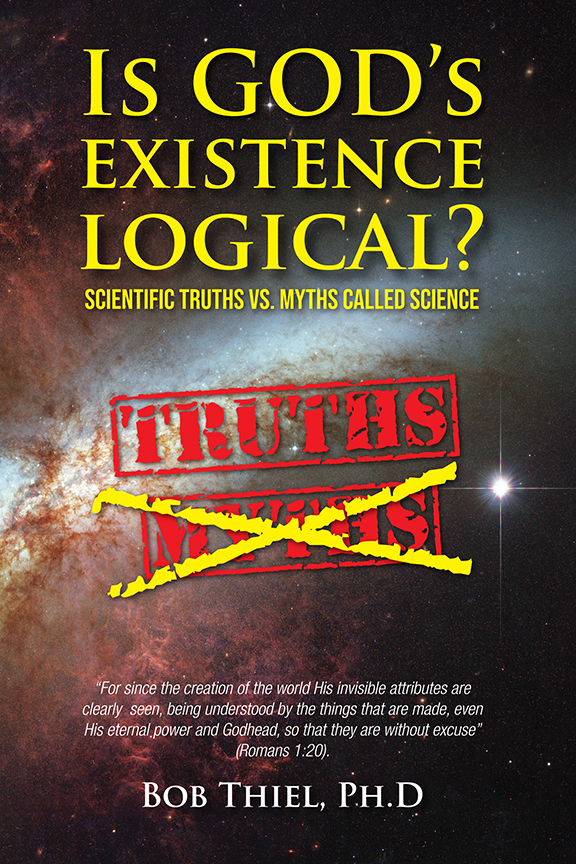Doctrine matters: Herbert W. Armstrong vs. Martin Luther
Thursday, November 25th, 2021

Herbert W. Armstrong and Martin Luther
Most people are familiar with the Protestant Reformer Martin Luther. And most people who come to this COGwriter Church of God News page regularly are familiar with the late COG leader Herbert W. Armstrong.
While both men had issues in their personal lives, I would like to highlight a couple of their doctrinal/theological similarities and a couple of doctrinal differences.
Ten Commandments
Regarding the Ten Commandments, Martin Luther claimed that:
God threatens to punish all who break these commandments…Therefore, we should also love and trust in Him and gladly do what He commands” (Luther’s Small Catechism with Explanation. Concordia Publishing House, St. Louis, 1986, p.12).
The fruits of this sin are afterwards the evil deeds which are forbidden in the Ten Commandments…we hold that the Law was given by God, first, to restrain sin by threats and the dread of punishment, and by the promise and offer of grace and benefit (Luther Martin. The Smallclad Papers. 1537. Translated by F. Bente and W. H. T. Dau Published in: _Triglot Concordia: The Symbolical Books of the Ev. Lutheran Church_. (St. Louis: Concordia Publishing House, 1921), pp. 453-529).
…teach them first of all these articles, namely the ten commandments…But as for those that will not learn, let them be told that they deny Christ and are no Christians…(Luther M. The Short Catechism, 1529. Cited in Bettenson H, ed., Documents of the Christian Church. London: Oxford University Press, 1943, p. 225).
Furthermore, the Christian Questions and Their Answers section of that book states (it is unclear if Martin Luther actually wrote that section, though it is ascribed to him):
“1. Do you believe that you are a sinner? Yes, I believe it, I am a sinner. 2. How do you know this? From the Ten Commandments, which I have not kept…The Ten Commandments are the law of God” (Luther’s Small Catechism with Explanation. Concordia Publishing House, St. Louis, 1986. pp.39-40,53).
Martin Luther wrote,
…whoever wishes to know and to do good works needs nothing else than to know God’s commandments. Thus Christ says, Matthew xix, “If thou wilt enter into life, keep the commandments.” And when the young man asks Him, Matthew xix, what he shall do that he may inherit eternal life, Christ sets before him naught else but the Ten Commandments (Luther M. Treatise on Good Works, March 29, 1520).
For even if a Moses had never appeared and Abraham had never been born, the Ten Commandments would have had to rule in all men from the very beginning, as they indeed did and still do (Luther, M. Against the Sabbatarians:Letter to a Good Friend, Part II, 1538).
Similarly, Herbert Armstrong taught,
“The ten commandments were first made known to ADAM in the Garden of Eden…We read the answer in Romans 5:12, ‘Wherefore, as by one man sin entered into the world, and DEATH BY SIN; so death passed upon all men, for that all have sinned.’ And in verse fourteen, ‘Death reigned FROM ADAM TO MOSES’. ‘Sin is NOT imputed when there is NO law,’ you read in the 13th verse. Yet sin was imputed because death did reign from Adam to Moses. There must then have been a law from Adam’s time…What is sin? Is there a BIBLE definition? Is there any place in the Bible where it says, “Sin is . . . and then follows the definition? The answer is in 1 John 3:4, ‘Sin is the transgression of the law.’ ” (Armstrong, H. Were the TEN COMMANDMENTS in force before Moses? Circa 1956).
A free online booklet related to the Ten Commandments is available: The Ten Commandments: The Decalogue, Christianity, and the Beast.
State of the Dead
They even had similarities on the state of the dead.
The immediate cause of Luther’s stand on the sleep of the soul was the issue of purgatory, with its postulate of the conscious torment of anguished souls. While Luther is not always consistent, the predominant note running all through his writings is that souls sleep in peace, without consciousness or pain. The Christian dead are not aware of anything—see not, feel not, understand not, and are not conscious of passing events. Luther held and periodically stated that in the sleep of death, as in normal physical sleep, there is complete unconsciousness and unawareness of the condition of death or the passage of time.† Death is a deep, sound, sweet sleep.‡ And the dead will remain asleep until the day of resurrection (Martin Luther and William Tyndale on the State of the Dead pp. 571-572).
Martin Luther specifically taught:
It is probable, in my opinion, that, with very few exceptions indeed, the dead sleep in utter insensibility till the day of judgment… On what authority can it be said that the souls of the dead may not sleep out the interval between earth and heaven… (Luther M. Translated by W. Hazlitt. The life of Luther written by himself. M. Michelet, ed. Bohn’s Standard Library. G. Bell, 1904, p. 133).
Herbert Armstrong taught,
“The Bible teaching contrary to much religious and church teaching – that is the WORD OF GOD teaching – is that the dead ARE DEAD – utterly unconscious. Notice the inspired wisdom of Solomon: “For the living know that they shall die: but the dead know not anything…” – the RSV translates it “the dead KNOW NOTHING” (Eccl.9:5)… I Corinthians 15:49: “And as we have borne the image of the earthy, we shall [future – resurrection] also bear the image of the heavenly” (verse 49). As we are now flesh, we shall be SPIRIT – at the resurrection, that is, when we shall be “BORN AGAIN” – when we shall see, enter into, the Kingdom of God – when we are Spirit – at the resurrection! ‘Now this I say, brethren, that flesh and blood cannot Inherit the kingdom of God; neither doth corruption inherit incorruption. Behold, I shew you a mystery; We shall not all sleep [be dead], but we shall all be changed, in a moment, in the twinkling of an eye, at the last trump: for the trumpet shall sound, and the dead shall be raised incorruptible, and we [the then living] shall be changed (verses 50-52)’” (Armstrong HW. Incredible Human Potential. Chapter 12).
While some criticize this teaching and call it “soul sleep”, it was held by the earliest Christians. Please check out the article Did Early Christians Believe that Humans Possessed Immortality?
Both men had a lot of dissimilarities, personal and professional. But, this article will not focus on personal dissimilarities, but rather on a few of the doctrinal dissimilarities. Because, from the perspective of biblical truth, those are the primary dissimilarities which should count.
Is the Bible Fallible? Does the Bible Contradict Itself?
Martin Luther seems to think so as he wrote about the Book of James,
In the first place it is flatly against St. Paul and all the rest of Scripture in ascribing justification to works. It says that Abraham was justified by his works when he offered his son Isaac; though in Romans 4 St. Paul teaches to the contrary that Abraham was justified apart from works, by his faith alone, before he had offered his son, and proves it by Moses in Genesis 15…But this James does nothing more than drive to the law and to its works. Besides, he throws things together so chaotically that it seems to me he must have been some good, pious man, who took a few sayings from the disciples of the apostles and thus tossed them off on paper. Or it may perhaps have been written by someone on the basis of his preaching. He calls the law a ‘law of liberty’, though Paul calls it a law of slavery, of wrath, of death, and of sin (Luther, M. Preface to the Epistles of St. James and St. Jude, 1546; originally 1522).
As the following quotes show, Martin Luther did not care for several books in the Old Testament either:
Job spoke not as it stands written in his book, but only had such thoughts. It is merely the argument of a fable. It is probable that Solomon wrote and made this book…Ecclesiastes ought to have been more complete. There is too much incoherent matter in it…Solomon did not, therefore, write this book…I am such an enemy to the book of Esther that I wish it did not exist, for it Judaizes too much…The history of Jonah is so monstrous that it is absolutely incredible. (as quoted in O’Hare, p. 202).
For additional information, please read the article, Sola Scriptura or Prima Luther: What Did Martin Luther Actually Teach about the Bible?
Yet, WCG under Herbert Armstrong taught,
The Bible is true not only scientifically, but historically. Again, though the Bible is not a history book, what ever is mentioned as history in the Bible is always true…Is the Word of God infallible? It certainly is (Is the Bible Infallible? Good News Article – Dec. 1980).
Are All the Books of the New Testament Proper?
Martin Luther had a fairly low view of the Books of Hebrews, James, Jude, and Revelation as he wrote,
Up to this point we have had the true and certain chief books of the New Testament. The four which follow have from ancient times had a different reputation. In the first place, the fact that Hebrews is not an epistle of St. Paul, or of any other apostle, is proved by what it says in chapter 2 (Luther, M. Prefaces to the Epistle of the Hebrews, 1546; originally1522).
Martin Luther wrote,
Concerning the epistle of St. Jude, no one can deny that it is an extract or copy of St. Peter’s second epistle, so very like it are all the words. He also speaks of the apostles like a disciple who comes long after them and cites sayings and incidents that are found nowhere else in the Scriptures. This moved the ancient fathers to exclude this epistle from the main body of the Scriptures. Moreover the Apostle Jude did not go to Greek-speaking lands, but to Persia, as it is said, so that he did not write Greek. Therefore, although I value this book, it is an epistle that need not be counted among the chief books which are supposed to lay the foundations of faith (Luther, M. Preface to the Epistles of St. James and St. Jude, 1546; originally 1522).
Martin Luther taught,
Which are the true and noblest books of the New Testament? From all this you can now judge all the books and decide among them which are the best. John’s Gospel and St. Paul’s epistles, especially that to the Romans, and St. Peter’s first epistle are the true kernel and marrow of all the books…Therefore John’s Gospel is the one, fine, true, and chief gospel, and is far, far to be preferred over the other three and placed high above them. So, too, the epistles of St. Paul and St. Peter far surpass the other three gospels, Matthew, Mark, and Luke. In a word St. John’s Gospel and his first epistle, St. Paul’s epistles, especially Romans, Galatians, and Ephesians, and St. Peter’s first epistle are the books that show you Christ and teach you all that is necessary and salvatory for you to know, even if you were never to see or hear any other book or doctrine. Therefore St. James’ epistle is really an epistle of straw, compared to these others, for it has nothing of the nature of the gospel about it (Luther, M. Prefaces to the New Testament. LW 35:357-362, 394-399 Preface to the New Testament, 1546; originally 1522).
Under Herbert Armstrong, WCG taught,
The Bible is true not only scientifically, but historically. Again, though the Bible is not a history book, what ever is mentioned as history in the Bible is always true…Is the Word of God infallible? It certainly is” (Is the Bible Infallible? Good News Article – Dec. 1980).
” ‘To bind up’ comes from the Hebrew word meaning ‘to complete.’ The apostles were used ‘to complete’ the testimony of Jesus Christ. The New Testament Church has “the testimony of Jesus Christ” (Rev. 12:17). It was also through Jesus’ disciples that God’s seal of approval was placed on those laws which are eternally binding on Christians. Yes, we can know! The Bible is COMPLETE! Not one book of the Bible has been lost. Not one is missing. The books of the Bible as you find them in your King James Version constitute the complete Bible! (Do We Have The COMPLETE BIBLE? Copyright 1959, 1974 Ambassador College).
Two articles of possibly related interest may be The Old Testament Canon and The New Testament Canon – From the Bible Itself. A free online book of possible interest is also available:
It may be of interest to also realize that while Martin Luther wrote, “John’s Gospel is the one, fine, true, and chief gospel, and is far, far to be preferred over the other three and placed high above them”, he (unlike HWA) ignored much of what it taught. The plain truth is that much of the Gospel According to John had to do with two holy day seasons: the final Passover season (Chapters 13-21) and one particular Feast of Tabernacles‘ season (Chapters 7-9)–times that Martin Luther did not observe like the original Christians did, but that Herbert Armstrong did.
Baptism of Infants/Children
“Why are babies to be baptized? A. Babies are to baptized because they are included in the words ‘all nations’ (Luther’s Small Catechism with Explanation. Concordia Publishing House, St. Louis, 1986, p.202).
Furthermore, Martin Luther got these statements confirmed,
Article IX: Of Baptism. Of Baptism they teach that it is necessary to salvation, and that through Baptism is offered the grace of God, and that children are to be baptized who, being offered to God through Baptism are received into God’s grace. They condemn the Anabaptists, who reject the baptism of children…Article XII:…They condemn the Anabaptists, who deny that those once justified can lose the Holy Ghost. (The Confession of Faith: Which Was Submitted to His Imperial Majesty Charles V. At the Diet of Augsburg in the Year 1530. by Philip Melanchthon, 1497-1560. Translated by F. Bente and W. H. T. Dau. Published in: Triglot Concordia: The Symbolical Books of the Ev. Lutheran Church. St. Louis: Concordia Publishing House, 1921, pp. 37-95.)
Thus Martin Luther not only encouraged infant baptism, he condemned those who opposed infant baptism.
The Apostle Peter taught, “Repent, and let every one of you be baptized in the name of Jesus Christ for the remission of sins” (Acts 2:38) “Then those that gladly received his word were baptized” (Acts 2:42).
Herbert Armstrong taught,
Should Children Be Baptized? One cannot be baptized until after he has fully REPENTED. Only those who BELIEVE, both the true GOSPEL (the Message Jesus preached, which is the Kingdom, or Government of God) and on JESUS CHRIST as personal Saviour, can be baptized (see Acts 2:38; 8:37; 16:31). Children have not reached that maturity where they have the self-discipline to truly repent, and believe (Armstrong H. All About Water Baptism. 1948, 1954, 1972 edition).
There is no recorded instance of any babies being baptized in the Old or New Testaments. An article of related interest may be Baptism and the Early Church.
On October 31, 2017, many celebrated Martin Luther’s Protestant Reformation, despite not realizing that he did not reform to teach the original and true Christian faith. The faith that we stand for in the Continuing Church of God.
Herbert W. Armstrong had many doctrines closer with the teachings of the Bible and early Christianity than Martin Luther did. See also Continuing History of the Church of God.
Some items of possibly related interest may include:
The Similarities and Dissimilarities between Martin Luther and Herbert W. Armstrong This article clearly shows some of the doctrinal differences between in the two. At this time of doctrinal variety and a tendency by many to accept certain aspects of Protestantism, the article should help clarify why the genuine Church of God is NOT Protestant. Do you really know what the Protestant Reformer Martin Luther taught and should you follow his doctrinal example? Here is a related sermon video: Martin Luther and Herbert Armstrong: Reformers with Differences.
Sola Scriptura or Prima Luther? What Did Martin Luther Really Believe About the Bible? Though he is known for his public sola Scriptura teaching, did Martin Luther’s writings about the Bible suggest he felt that prima Luther was his ultimate authority? Statements from him changing and/or discounting 18 books of the Bible are included. Do you really want to know the truth?
Who Gave the World the Bible? The Canon: Why do we have the books we now do in the Bible? Is the Bible complete?
COGwriter Position on Other Churches and Religions What is the fate of those who do not know Christ? What about those who profess Christ outside the Church of God?
Hope of Salvation: How the Continuing Church of God Differs from Protestantism The CCOG is NOT Protestant. This free online book explains how the real Church of God differs from mainstream/traditional Protestants. Several sermons related to the free book are also available: Protestant, Baptist, and CCOG History; The First Protestant, God’s Command, Grace, & Character; The New Testament, Martin Luther, and the Canon; Eucharist, Passover, and Easter; Views of Jews, Lost Tribes, Warfare, & Baptism; Scripture vs. Tradition, Sabbath vs. Sunday; Church Services, Sunday, Heaven, and God’s Plan; Seventh Day Baptists/Adventists/Messianics: Protestant or COG?; Millennial Kingdom of God and God’s Plan of Salvation; Crosses, Trees, Tithes, and Unclean Meats; The Godhead and the Trinity; Fleeing or Rapture?; and Ecumenism, Rome, and CCOG Differences.
Continuing History of the Church of God This pdf booklet is a historical overview of the true Church of God and some of its main opponents from Acts 2 to the 21st century. Related sermon links include Continuing History of the Church of God: c. 31 to c. 300 A.D. and Continuing History of the Church of God: 4th-16th Centuries and Continuing History of the Church of God: 17th-20th Centuries. The booklet is available in Spanish: Continuación de la Historia de la Iglesia de Dios, German: Kontinuierliche Geschichte der Kirche Gottes, French: L’Histoire Continue de l’Église de Dieu and Ekegusii Omogano Bw’ekanisa Ya Nyasae Egendererete.
Beliefs of the Original Catholic Church. Did the original “catholic church” have doctrines held by the Continuing Church of God? Did Church of God leaders uses the term “catholic church” to ever describe the church they were part of? Here are links to related sermons: Original Catholic Church of God? , Original Catholic Doctrine: Creed, Liturgy, Baptism, Passover, and What Type of Catholic was Polycarp of Smyrna?, Tradition, Holy Days, Salvation, Dress, & Celibacy, and Early Heresies and Heretics, and Doctrines: 3 Days, Abortion, Ecumenism, Meats, Tithes, Crosses, Destiny, and more, and Saturday or Sunday?
Where is the True Christian Church Today? This free online pdf booklet answers that question and includes 18 proofs, clues, and signs to identify the true vs. false Christian church. Plus 7 proofs, clues, and signs to help identify Laodicean churches. A related sermon is also available: Where is the True Christian Church? Here is a link to the booklet in the Spanish language: ¿Dónde está la verdadera Iglesia cristiana de hoy? Here is a link in the German language: WO IST DIE WAHRE CHRISTLICHE KIRCHE HEUTE?














